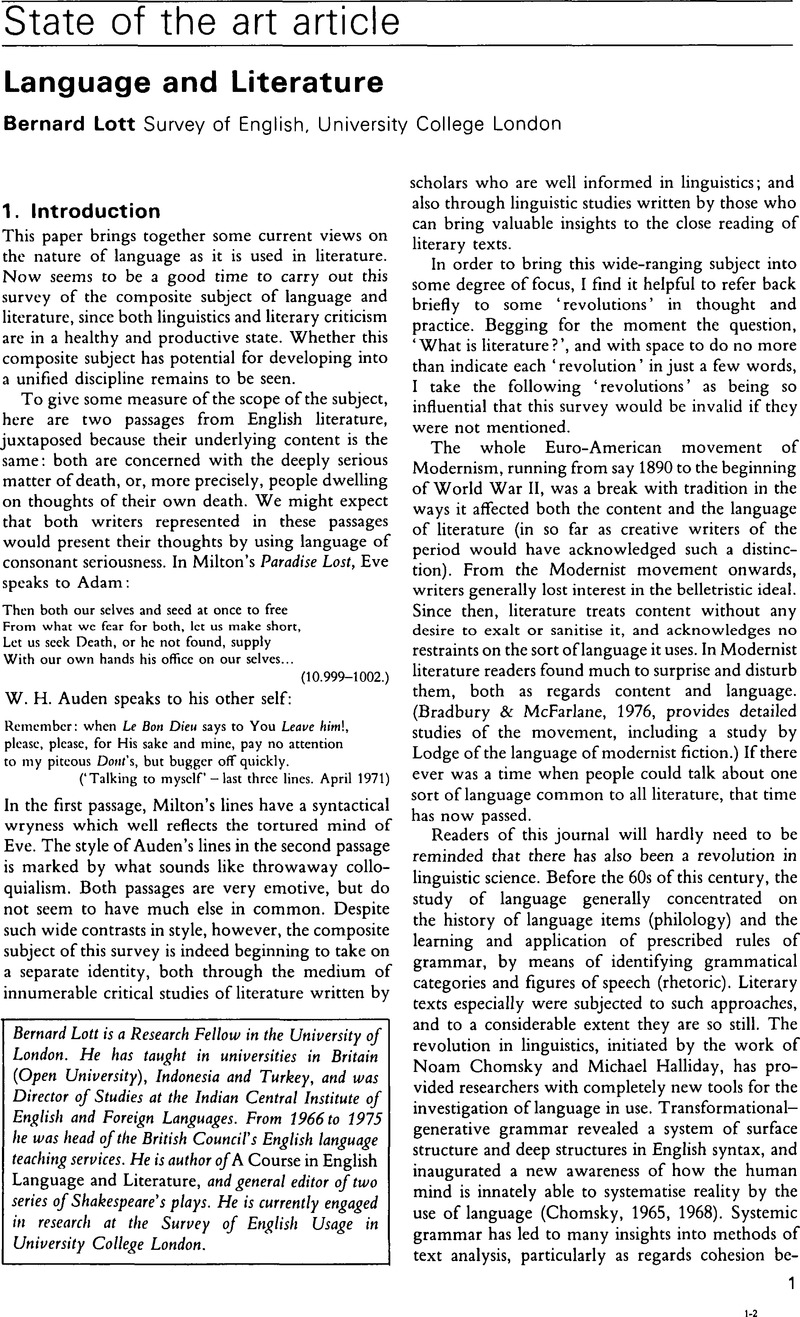Crossref Citations
This article has been cited by the following publications. This list is generated based on data provided by Crossref.
Mair, Christian
1989.
Naipaul's Miguel Street and Selvon's Lonely Londoners- Two Approaches to the Use of Caribbean Creole in Fiction.
The Journal of Commonwealth Literature,
Vol. 24,
Issue. 1,
p.
138.
Kline, Rebecca R.
1989.
Teaching Advanced Level Students to Hypothesize: Proceeding One Step at a Time1.
Foreign Language Annals,
Vol. 22,
Issue. 3,
p.
255.
Gilroy, Marie
and
Parkinson, Brian
1996.
Teaching literature in a foreign language.
Language Teaching,
Vol. 29,
Issue. 4,
p.
213.
Paran, Amos
2008.
The role of literature in instructed foreign language learning and teaching: An evidence-based survey.
Language Teaching,
Vol. 41,
Issue. 4,
p.
465.
Calafato, Raees
and
Paran, Amos
2019.
Age as a factor in Russian EFL teacher attitudes towards literature in language education.
Teaching and Teacher Education,
Vol. 79,
Issue. ,
p.
28.



